Have you already watched an official music video ”Rain on Me”? It was released in May 2020 by American singers, Lady Gaga and Ariana Grande. The song is a great hit single from Gaga’s sixth studio album.
If you have, how about watching an official parody of the video? It was released by Japanese popular comedians, Naomi Watanabe and Yuriyan Retriever. Lady Gaga and Ariana Grande have given their approval for this not-for-profit video.
Check out the parody MV below!
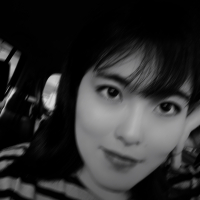
Have you enjoyed them? And now are you wondering what falls from the sky instead of knives in the parody?
Watanabe dances with one of them sticking out of her thigh, and she even takes a bite of it.
It is “Dango だんご”, a traditional Japanese sweet. Let’s have a look at this simple yet very satisfying Japanese dessert.
What is Dango だんご?

“Dango だんご” is Japanese sweet dumplings made from rice flour. It forms several small round “Mochi もち” balls (normally three or four) on a skewer and they are often topped with sauces or lightly seared. This sweet is really great as a snack and goes well with slightly bitter-tasting Japanese green tea.
Dango features a mix of flavors and textures. Plain dango itself is bland in taste or slightly sweetened, and the sauces has various flavors which are not overwhelmingly sweet. (It is important. If you are familiar with traditional Japanese confections, you might have found some of them too sweet.) Dango has a springy and gooey texture which might be different from anything you would find in your country. It makes a bite so amazing.
Dango has various flavors such as red bean paste, soy sauce glaze, sesame syrup and so on.

Let me introduce 5 popular variations of dango in japan.
Mitarashi Dando みたらしだんご
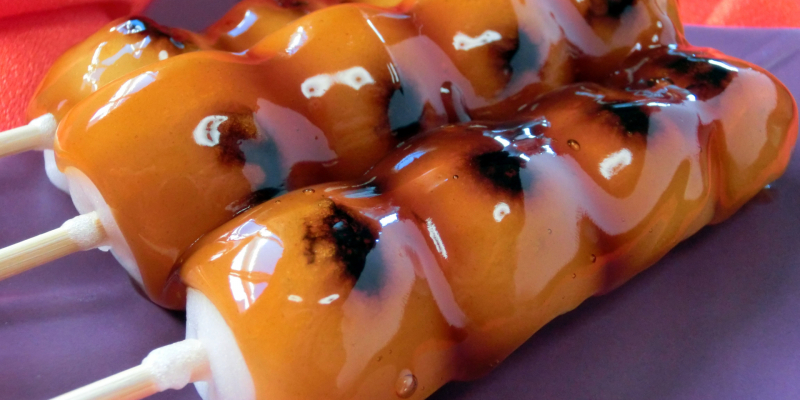
“Mitarashi Dango みたらしだんご” is one of the most popular dango dumplings loved by children and adults alike in Japan. This dango is covered with soy sauce syrup called “Mitarashi みたらし”. The glassy glaze has a pleasant sweet-salty flavor.
Some variations of Mitarashi dango is lightly seared before been coated with the sauce. The savory burnt fragrance will whet your appetite.
Mitarashi dango is one of Japanese confections I recommend you try to make. This traditional dessert is not as difficult as you might think to make, and the sauce needs some simple ingredients available in your country. They are just soy sauce, sugar and potato starch (or cornstarch).
Anko Dango あんこだんご
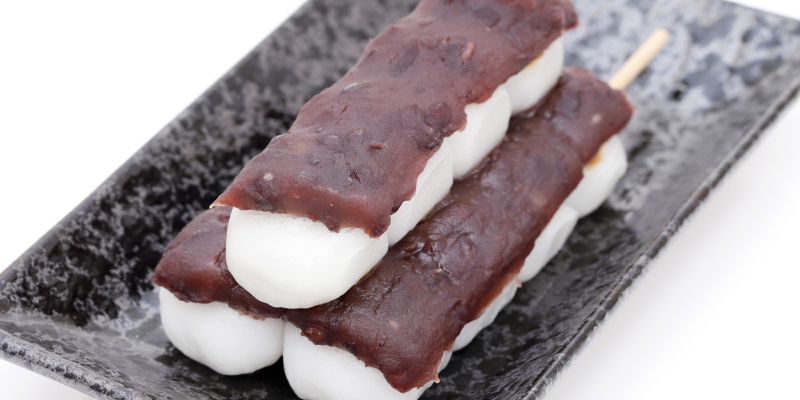
“Anko dango あんこだんご” is coated with red bean paste. The beans are boiled, mashed, and flavored with sugar. The dumplings are a popular traditional treat you can buy everywhere throughout Japan.
Hanami Dango 花見だんご
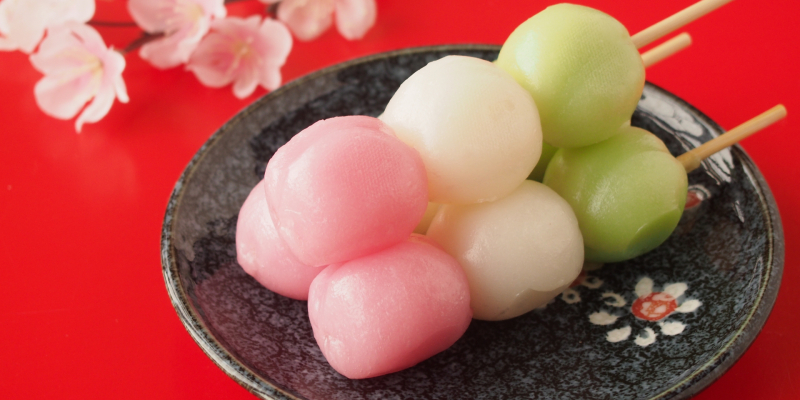
“Hanami dango 花見だんご”, also called “Sanshoku Dango 三色だんご”, has pink, white and green mochi balls on a stick. The balls are mixed with sugar, so they are slightly sweet and normally don’t come with any sauce. These iconic pink, white, and green colors are a distinct appearance of Hanami dango. Although the mochi balls are colored with food coloring nowadays, traditionally the pink is dyed with red shiso (Japanese basil), and the green is dyed with Japanese mugwort.
This multi-coloured dango is often eaten during the cherry blossom season as the word “Hanami 花見” refers to cherry blossom viewing.
Zunda Dango ずんだだんご
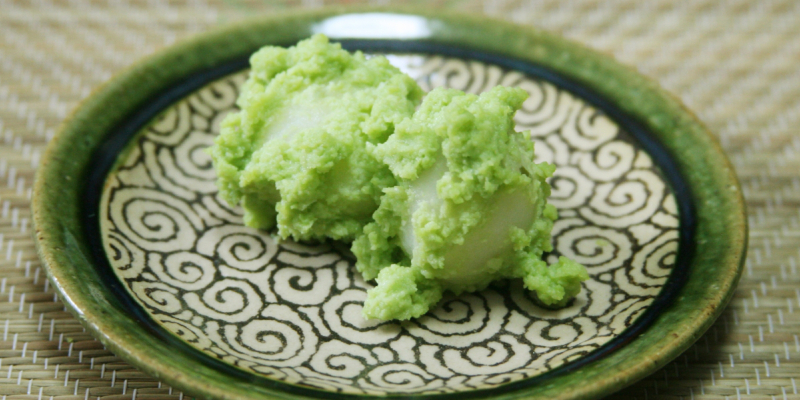
“Zunda Dango ずんだだんご” comes with a vivid green paste called “Zunda ずんだ”, which is cooked and pureed edamame. It is also sweetened with sugar.
Although this variation is one of my favorite dango dumplings, I admit it is not everyone’s cup of tea. You might feel something strange with the combination of edamame and sugar.
Goma Dango ごまだんご
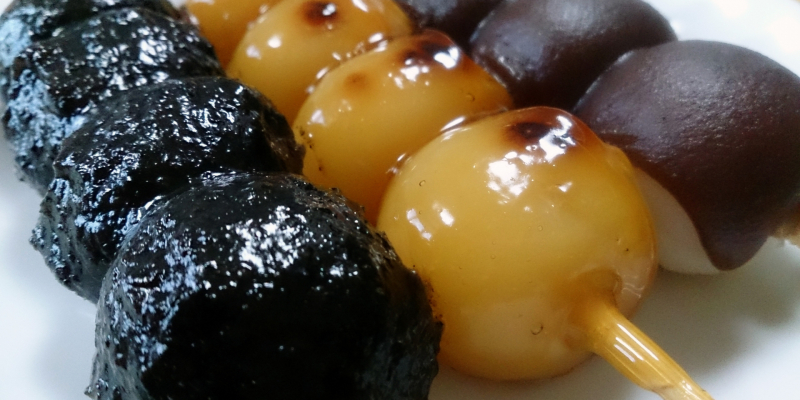
“Goma Dango ごまだんご” is coated with sweet black paste made from sugar and ground black sesame seeds. The texture of this paste is smooth and rich. The flavor of the ground sesame explodes in your mouth as soon as you take a bite of it.
How To Make Dango at Home
Do you wish to cook dango yourself? No worries, the recipe and ingredients for this sweet could not be simpler.
What makes dando so good is using proper flour. Dango dumplings are made from two different types of rice flour. One is “Johshinko 上新粉” made from Japanese non-glutinous rice, and the other is “Shiratamako 白玉粉” made from Japanese glutinous rice. These days, it’s common that only Shiratamako is chosen for the recipes.
It might be difficult to find the both types of rice flour in your country. So I recommend a substitution which you could find in Asian grocery stores in your neighborhood. It is “Mochiko もち粉” made from glutinous rice flour similar to Shiratamako. You will find it on Amazon as well.
You can add Tofu to achieve a smooth texture. Silken (soft) tofu makes the dough moist and soft.
Conclusion
There are so many different types of dango enjoyed all year around in Japan. They are commonly available at anywhere, such as Japanese sweets shops, super markets, and even convenience stores.
Back to the official parody music video of “Rain on me”, the comedian Watanabe dances with a stick of dango jutting out from her thigh. I’m sure you know this, but let me say that the dessert is not so sticky enough to keep adhering to dancing people. But it adds more fun to the parody.

I hope you have enjoyed reading this article, and it helps you find your favorite dango!

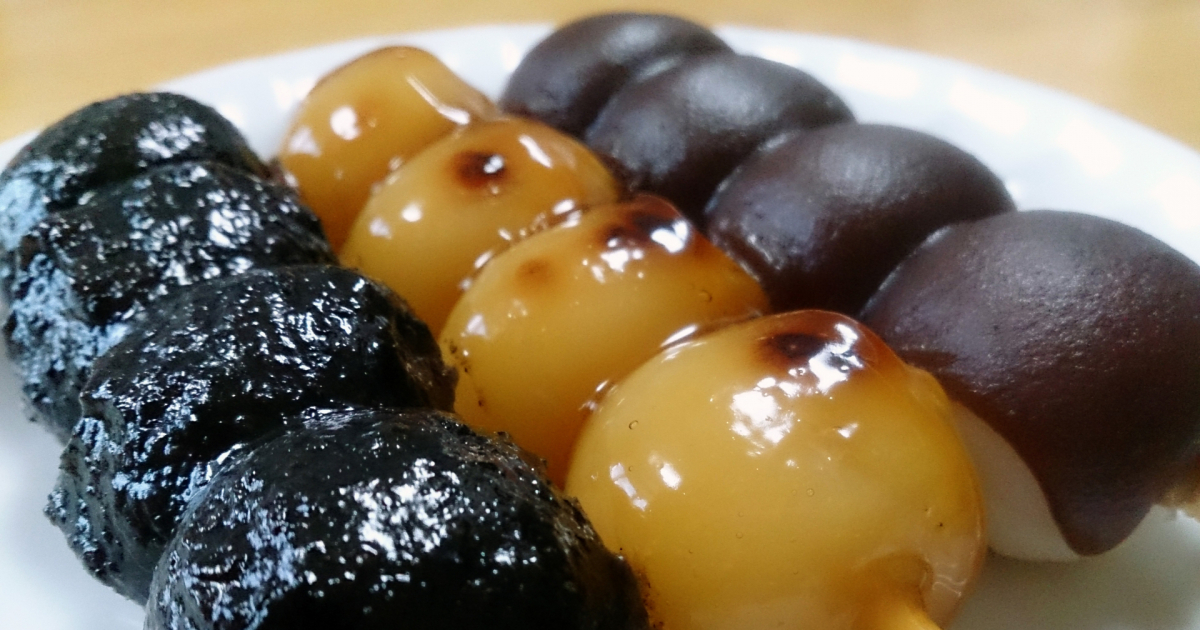


Comments